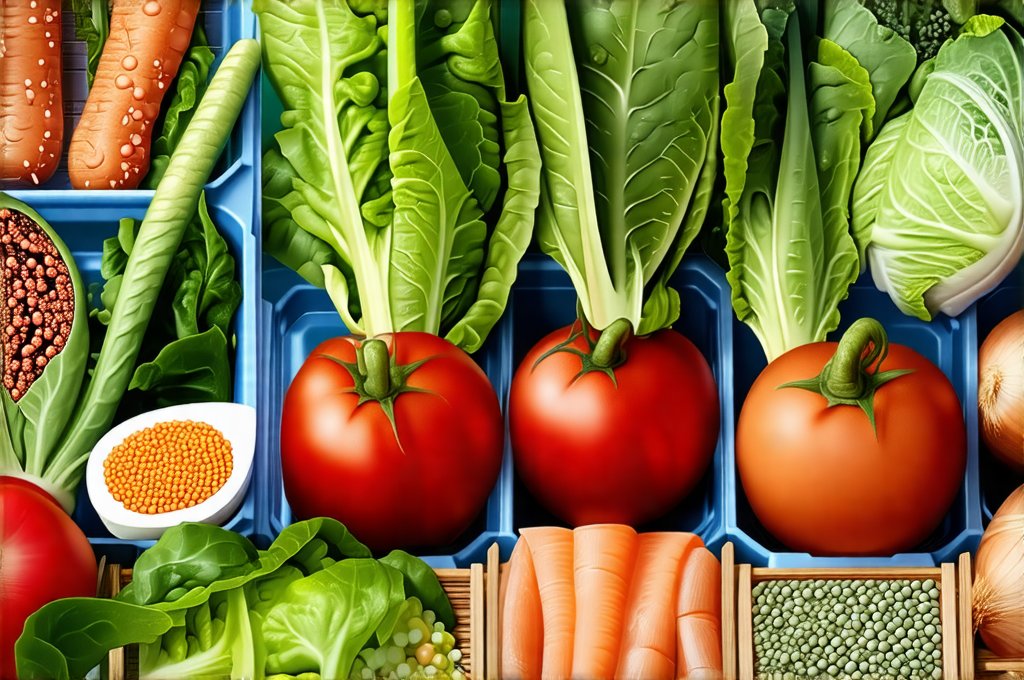The intricate world within us—the microbiome—is increasingly recognized as fundamental to overall well-being. For decades, we’ve focused on eliminating microbes, believing it synonymous with health. However, current research paints a vastly different picture: our bodies aren’t sterile environments and actually require diverse microbial communities for proper function. These communities, comprised of bacteria, fungi, viruses, and other microorganisms, reside primarily in the gut but also colonize skin, lungs, and various other body sites, impacting digestion, immunity, even mental health. The composition and quality of these microbial ecosystems are profoundly shaped by numerous factors, including genetics, lifestyle, and critically, our food system—from how food is grown to how it’s stored.
Modern agricultural practices and the subsequent methods used for preserving foods have drastically altered the microbial landscape we encounter daily. Historically, humans consumed foods teeming with microbes – naturally fermented products were commonplace, produce was often freshly harvested and contained soil-based organisms, and seasonal eating meant a more diverse intake of plant compounds and associated microorganisms. Today’s food system prioritizes shelf life, yield, and aesthetics, often at the expense of microbial diversity. This shift has far-reaching consequences for our own microbiome quality, potentially contributing to the rise in chronic diseases linked to gut dysbiosis – an imbalance in the microbial community. Understanding these effects is crucial for cultivating a healthier relationship with both food and our internal ecosystems.
Modern Farming Practices & Microbiome Impact
Modern farming relies heavily on practices that, while increasing efficiency, can simultaneously reduce microbial diversity in our food supply. – Monoculture farming, where vast areas are dedicated to a single crop, drastically limits the variety of microorganisms present in the soil and consequently, on the produce grown there. This contrasts sharply with polyculture systems which promote biodiversity both above and below ground. – Extensive use of synthetic fertilizers and pesticides further disrupts soil microbial ecosystems, hindering beneficial microbe populations that support plant health and contribute to the nutritional quality of crops. These chemicals don’t just affect target pests; they can have broad-spectrum impacts on non-target organisms, including microbes essential for nutrient cycling and disease suppression in the soil. – Finally, post-harvest handling practices like washing produce with chlorine solutions, while intended to reduce spoilage, also inadvertently kill off beneficial microbial communities that might be present.
The impact extends beyond the farm itself. Animals raised in Concentrated Animal Feeding Operations (CAFOs) often receive routine antibiotic treatments, not necessarily for illness but as a preventative measure and growth promoter. This widespread antibiotic use contributes to the development of antibiotic resistance in both animal and human gut microbes, while simultaneously reducing microbial diversity within the animals themselves. When we consume meat from these sources, we’re potentially ingesting bacteria carrying resistant genes and altering our own microbiome composition. It’s not simply about avoiding antibiotics personally; it’s about the systemic overuse impacting food production systems. The resulting reduction in microbial variety has been linked to weakened immune responses and increased susceptibility to allergies and autoimmune conditions. If digestive issues are a concern, understanding how food sensitivities affect sleep quality can offer additional insight.
Moreover, the trend towards globalization of our food supply means produce often travels long distances before reaching consumers. This extended transit time requires more intensive processing and preservation techniques, further diminishing microbial diversity. Consider the contrast: a locally grown tomato picked at peak ripeness versus one shipped from across the country that has been harvested green and artificially ripened with ethylene gas. The latter is less likely to harbor beneficial microbes associated with natural ripening processes and may have undergone treatments designed to extend shelf life but detrimental to microbial communities. Ultimately, modern farming prioritizes production over preservation of microbial richness. Understanding how food temperature and meal pacing affect digestive response can help optimize your body’s ability to process the foods you eat.
Food Storage & Preservation Techniques
The methods we employ to preserve food—essential for reducing waste and ensuring year-round availability—also significantly impact microbiome quality. – Pasteurization and sterilization, while vital for eliminating harmful pathogens in milk, juice, and other products, simultaneously destroy beneficial microbes that contribute to fermentation or enhance nutritional value. This creates a sterile environment lacking the microbial complexity historically present in these foods. – Canning and pickling, though traditional methods, often involve high heat or acidic environments that selectively favor certain types of microbes while eliminating others. While these processes prevent spoilage, they drastically alter the original microbial composition. – Refrigeration slows down microbial growth but doesn’t eliminate it; however, the low temperatures can also inhibit the activity of beneficial bacteria.
Freezing is arguably one of the least disruptive preservation methods in terms of microbiome impact, as it primarily halts microbial activity rather than killing microbes outright. However, even freezing can cause some cell damage and alter the viability of certain microbial populations. More concerning are modern food storage techniques like Modified Atmosphere Packaging (MAP) which alters the gas composition around food to extend shelf life. While effective at reducing spoilage, MAP can also create an environment that favors the growth of specific microorganisms while suppressing others, impacting the overall microbial balance. These altered environments are often devoid of the beneficial microbes we’ve evolved alongside for millennia. How weather and seasons affect acid reflux symptoms can also play a role in how your body responds to different foods, impacting digestion.
One important distinction is between fermented foods and those simply “preserved.” Fermentation—the process of using microorganisms to transform food—is inherently microbiome-enhancing. Foods like yogurt, sauerkraut, kimchi, and kombucha are teeming with live cultures that can positively influence our gut health. The issue isn’t necessarily preservation itself; it’s the type of preservation method and whether it prioritizes microbial elimination over cultivation. Choosing fermented foods regularly is a proactive step towards replenishing beneficial microbes lost through other food processing methods. If chronic indigestion or acid exposure are concerns, understanding how long-term indigestion and acid exposure can damage the esophagus is important.
Rebuilding Microbiome Quality: Dietary Strategies
Given the impact of modern farming and food storage on microbiome quality, what can we do to counteract these effects? The answer lies in consciously incorporating strategies that support microbial diversity. – Prioritize whole, unprocessed foods as much as possible. This means focusing on seasonal produce, locally sourced options when available, and minimizing consumption of heavily processed foods with long ingredient lists. – Embrace fermented foods. Regularly including yogurt (with live cultures), kefir, sauerkraut, kimchi, kombucha, or other traditionally fermented products can introduce beneficial microbes into the gut. – Diversify your diet. A wide range of plant-based foods provides diverse prebiotic fibers—food for our gut bacteria—supporting a more robust and resilient microbiome. Aim for 30 different plant-based foods per week to maximize diversity.
Beyond specific food choices, consider the source of your food. Supporting farms that prioritize regenerative agriculture practices – those focusing on soil health, biodiversity, and minimal chemical inputs – is a powerful way to promote microbial richness in our food supply. Organic farming, while not a perfect solution, generally employs less harmful chemicals than conventional methods, supporting healthier soil ecosystems. Also, explore farmers markets and Community Supported Agriculture (CSA) programs to gain access to fresher, locally grown produce with potentially higher microbial diversity. Finally, consider growing some of your own food, even if it’s just herbs or a small vegetable garden. This allows you to control the entire process, from seed to table, ensuring minimal disruption to microbial communities. Investing in microbiome health isn’t just about what we eat; it’s about how our food is grown and preserved. How GERD affects quality of life can be significantly impacted by diet choices, so understanding these connections is critical.
Ultimately, restoring microbiome quality requires a holistic approach that acknowledges the interconnectedness of food production, preservation, and consumption. By becoming more mindful consumers and supporting sustainable agricultural practices, we can begin to reverse the negative impacts of modern farming and cultivate a healthier relationship with both our food and ourselves. Hormonal changes can also influence digestion, so it’s important to consider these factors too.


















